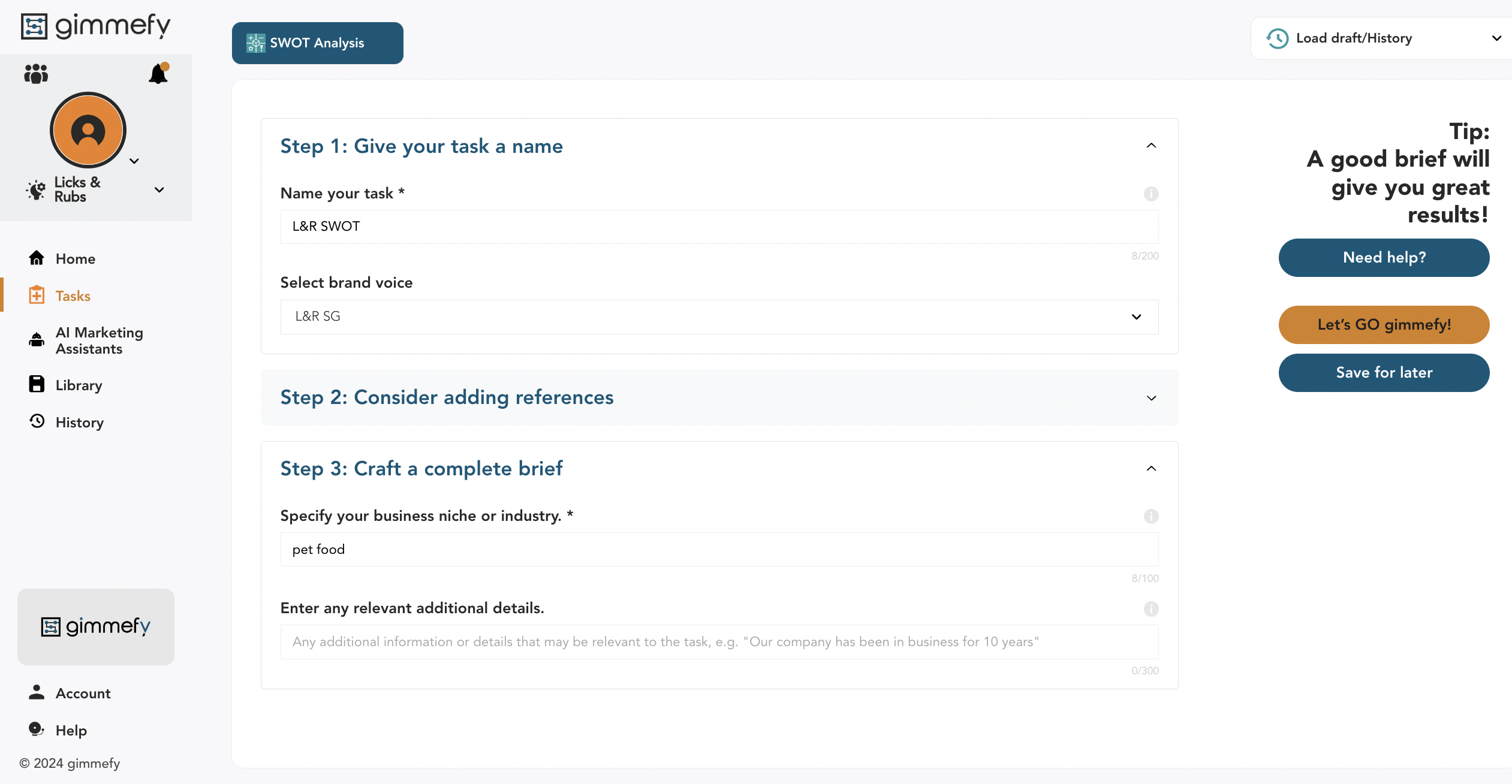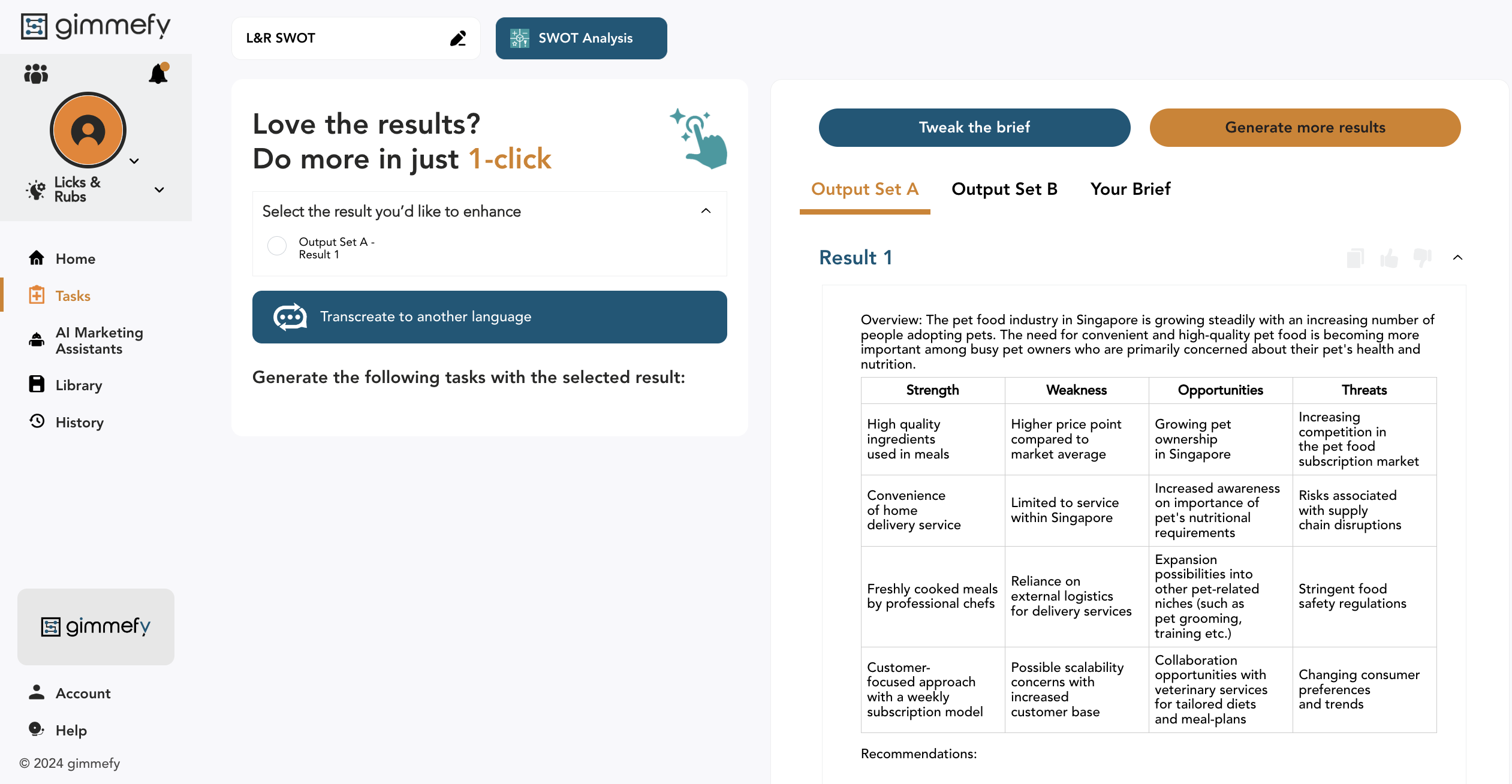
In today’s competitive business landscape, gaining a deep understanding of your strengths, weaknesses, opportunities, and threats is essential for making informed decisions and positioning your brand for growth. SWOT analysis is a powerful tool that allows you to assess these factors and develop strategies accordingly. In this step-by-step guide, we’ll walk you through the process of conducting a SWOT analysis to unlock valuable insights for your business success.
Step 1: Name your task for organisation
Start by giving your SWOT analysis task a descriptive name. This will help you keep track of the specific objectives or areas of focus within your analysis.
Step 2: Specify your business niche or industry
Provide a concise description of your business niche. gimmefy will generate a SWOT analysis based on the industry and your Brand Voice.
Review your SWOT analysis findings to identify key insights. Look for patterns, connections, and correlations between the internal and external factors identified. Based on these insights, develop strategies to leverage your strengths, address your weaknesses, seize opportunities, and mitigate threats.
Here’s a sample result from the task prompt.
Assess your business or brand’s internal factors by evaluating its strengths and weaknesses. List the areas where you excel and have a competitive advantage (strengths), as well as the aspects that may be holding you back or need improvement (weaknesses).
Analyse the external factors affecting your business or brand by identifying opportunities and threats in the market. Consider emerging trends, technological advancements, market demand, customer behaviour, regulatory changes, and any other relevant factors that present growth opportunities or pose potential risks.
Adjust your strategies as needed based on new insights or changing market conditions.
By following this step-by-step guide to conducting a comprehensive SWOT analysis, you’ll gain valuable insights into your business or brand’s position in the market. These insights will empower you to make informed decisions, capitalise on opportunities, overcome challenges, and achieve long-term success.
Remember to revisit and update your SWOT analysis periodically to ensure it remains aligned with your evolving business goals and dynamic market conditions.






Leave a Reply